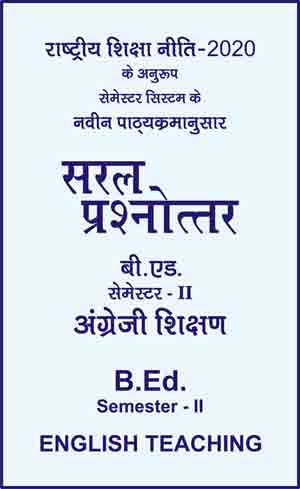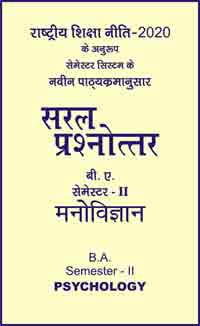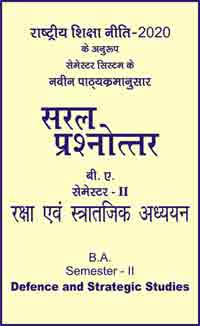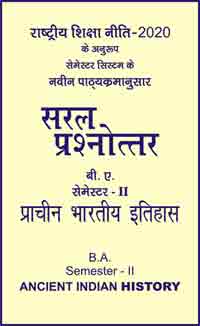|
बी एड - एम एड >> बीएड सेमेस्टर-2 अंग्रेजी शिक्षण बीएड सेमेस्टर-2 अंग्रेजी शिक्षणसरल प्रश्नोत्तर समूह
|
5 पाठक हैं |
||||||
बीएड सेमेस्टर-2 अंग्रेजी शिक्षण - सरल प्रश्नोत्तर
Question- Describe the R.C.E.M. approach and its uses for writing objectives in behavioural form.
Ans.
R.C.E.M. Approach for Writing Objectives :- The educationists of Regional College of Education, Mysore in 1972 developed an approach for writing objectives in behavioural terms. After the name of institution Regional College of Education, Mysore, this approach is often called as R.C.E.M. approach. This approach has used the Bloom’s taxonomy of educational objectives with a little modification. There are four categories instead of six. The last three categories i.e., analysis, synthesis and evaluation are summerised into one new category, i.e., creativity. These four categories have been further divided into seventeen mental abilities or processes. These abilities or processes are used for writing the objectives of cognitive, affective or psychomotor domains in behavioural terms. These seventeen mental processes have been summarized in the following table :
| Bloom’s Taxonomy of Objectives | The R.C.E.M Taxonomy of Objectives | Mental Processes or Abilities Objectives |
|---|---|---|
| 1. Knowledge | 1. Knowledge | Recall |
| 2. Comprehension | 2. Understanding | Recognise |
| Seeing relationship | ||
| Cite example | ||
| Discriminate | ||
| Classify | ||
| Interpret | ||
| Verify | ||
| Generalise | ||
| Reason out | ||
| 3. Application | 3. Application | Formulate |
| Hypotheses | ||
| Infer | ||
| Predict | ||
| 4. Analysis | 4. Creativity | Analyse |
| 5. Synthesis | Sythesise | |
| 6. Evaluation | Evaluate |
It is evident from the above table that out of the total seventeen mental processes or abilities, there are two abilities for knowledge, seven for understanding, five for application and three for creativity. The category of ‘comprehension’ under Bloom’s taxonomy has been termed as ‘creativity’.
The objectives of all school teaching subjects can be written with the help of seventeen statements. After identifying the objectives, elements of the content may be placed in the form of statement to obtain the behavioural form of the objectives. This method is very useful for writing objectives in behavioural terms.
We can illustrate this method with the help of following examples :–
• The students are able to recall the definition of noun. (Knowledge)
• The students are able to recognize the form of verb in this sentence. (Knowledge)
• The students are able to classify pronoun. (Comprehension)
• The students are able to discriminate about prose and poetry. (Comprehension)
• The students are able to identify the figures of speech present in the passage. (Application)
• The students are able to use idioms in own words. (Application)
• The students are able to analyse the sentence into its elements. (Creativity)
• The students are able to evaluate their spellings. (Creativity)
Merits of R.C.E.M. approach :–
(i) R.C.E.M. approach is very easy and useful.
(ii) It does not create any doubt or confusion in preparing criterion test items.
(iii) This approach is equally applicable for cognitive, affective and psychomotor domains.
(iv) This approach recommended that learning should take place in terms of mental process or abilities.
(v) This method is best suited for Indian conditions.
(vi) It is effectively applicable for writing objectives in behavioural terms.
Demerits of R.C.E.M. approach :–
(i) This approach suggested only seventeen mental abilities or processes whereas Gilford suggested 120 mental abilities.
(ii) According to R.C.E.M. approach, it is difficult to differentiate among cognitive, affective and psychomotor objectives.
(iii) Sometimes, there arises difficulty to select appropriate mental process for a specific content element.
(iv) There is no relevance in the numbering of mental abilities assigned to different categories.
|
|||||













